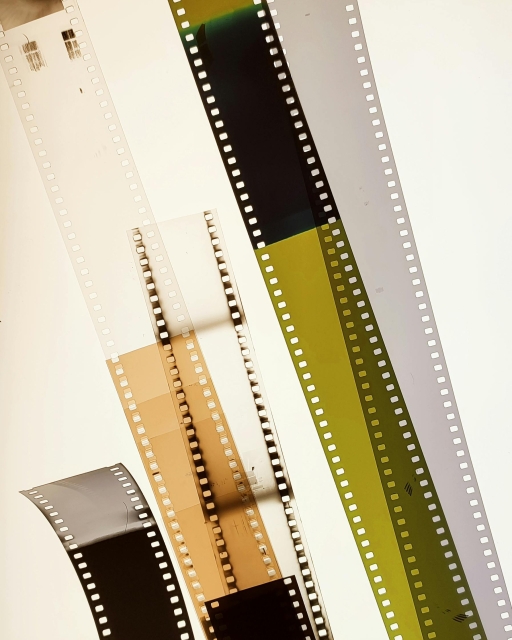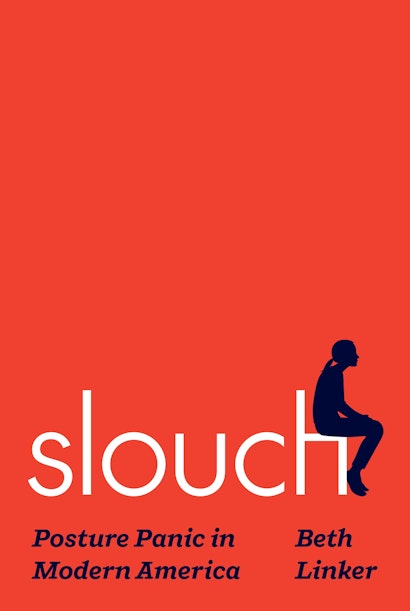In the days leading up to the release of my latest book, Slouch: Posture Panic in Modern America—wherein I offer a critique of the health belief that poor posture portends a future of pain and illness—I am already fielding angry emails from people who wonder why I would advise against something that is good for them. What I offer in my book is an account of how our fears about poor posture came about over a century ago, fueled by public health messaging and a marketplace that benefited from creating panic about slouching. The belief that upright posture was a meaningful indicator of future health was established during the early twentieth century, a time during the height of eugenics, before the advent of antibiotics, and when the U.S., eager to expand its global reach, expanded its military operations exponentially. As a result of these political and nationalized efforts to discipline American bodies, what was once conjectures about the relationship between human posture and health became entrenched into American culture as unquestioned truths.
This is what historians of science do. We closely examine scientific truth claims from the past and look for the ways in which politics and culture dictate which kinds of questions are deemed important enough to ask in the first place, and how these same social forces guide the process of arriving at a collectively agreed upon answer. In my particular case, I show how and why we know, scientifically speaking, far less about the effects of poor posture on health then we think we do, despite media stories and fitness devices that claim a causal link between the two.
But there’s so much more to the history of American posture panic than a “hot take” on whether or not it makes sense to plunk down hundreds of dollars on the latest ergonomic chair or Pilates classes.
One facet of this history that I still find both fascinating and troubling is the 1990s nude posture photography scandal. From the 1910s to the early 1970s, many American universities and colleges had its students stand fully or nearly unclothed for an annual posture photo. University physical educators and physicians used these photos to assess student health, to develop college classes in posture training, and to motivate students to comply with physical education instruction. Regarding the latter, the hope was to shame students with poor posture by showing them objective, photographic proof of their unappealing, slouching features, while also prizing improvement and propping up students who exhibited “A” grade form.
From the outset, these photos caused problems for university officials. Early in the century, there were several cases of female co-eds suing in the name of preserving their dignity. After World War II, when university campuses grew and diversified as a result of the GI Bill, posture photos of female students often went missing, purportedly stolen by their male peers. Yale men would raid Vassar’s gym for female posture photos, and then create cards that would be graded, traded, and sold. As I write in my book, similar to Mark Zuckerberg’s original Harvard-based Facebook, Yale men of the 1950s and 1960s would rank the nude posture photos, giving them each a grade: ‘A’ for too hot to imagine, ‘B’ for ravishing, ‘C’ for nice. With the intention of selling the cards to other Ivy men, Yalies would assign a price to each photo card based on the degree of “hotness,” with values ranging from $75 to $150.
Not able to control the security and circulation of these photos—not to mention the feeling of degradation that they caused—most universities ceased the practice of assessing posture altogether by the early 1970s.
Despite this, the photographic record of the practice lived on, or at least until 1995 when a New York Times Magazine exposé titled “The Great Ivy League Nude Posture Picture Scandal,” led to the wholesale destruction of archival records. Within a matter of months of this piece hitting the newsstands, decades of recorded history were incinerated or shredded beyond recognition.
As an historian, stories of intentional archival destruction always give me pause. Archives are meant to preserve records of events and people for future generations to study and research. Some archival holdings are too sensitive and threaten the privacy of living people or their next of kin—in these cases there are customary safeguards to be taken, such as restricting the records for public viewing until a future date after the death of the living individuals identified in the records. Such records could also be de-identified in order to preserve privacy.
This didn’t happen with the posture photographs and institutions named in the New York Times Magazine article. Instead, officials from Harvard, Yale, Princeton, Penn, along with many of the Seven Sisters colleges, capitulated to alumni threats and outrage and had these photographs purged from the record. Archivists working for these institutions had to forego their professional duty of preservation because university officials deemed the privacy of and future donor relations with its alumni to be more valuable.
Historians today frequently talk about archival silences. But when this subject comes up, it usually refers to the fact that there is an inherent imbalance in the archival record, for preservation requires institutional connections, money, space, time, and literacy. Historians who wish to portray and write a more balanced account of the past often lament that the stories of white, elite men are so much easier to find than that of historically marginalized peoples.
And yet, in the case of posture photography, I see the opposite happening. In the history I tell, the white, elite, educated class had the power to erase themselves from the historical record.
I can’t help but think of the 1995 fate of the Ivy League posture photos against the backdrop of the still roiling debate around the Zealy Daguerreotypes, 19th century images of mostly unclothed enslaved Black men and women, owned and on display at Harvard’s Peabody Museum. The photos are also reproduced in a 2020 book that contains scholarly commentary.
One takeaway from a comparison of the Zealy photos with the twentieth-century posture photos is that sometimes white elites are strategically missing from the record, while marginalized peoples stand in full view, not having the power to erase themselves at will. For future generations of historians and scholars, both kinds of archival silences will need to be expected and accounted for.
Beth Linker is a historian of medicine and disability and a former physical therapist. She is the Samuel H. Preston Endowed Term Professor in the Social Sciences in the Department of History and Sociology of Science at the University of Pennsylvania. She is the author of War’s Waste: Rehabilitation in World War I America, and her work has been featured in The New Yorker, the Boston Globe, and other publications.

